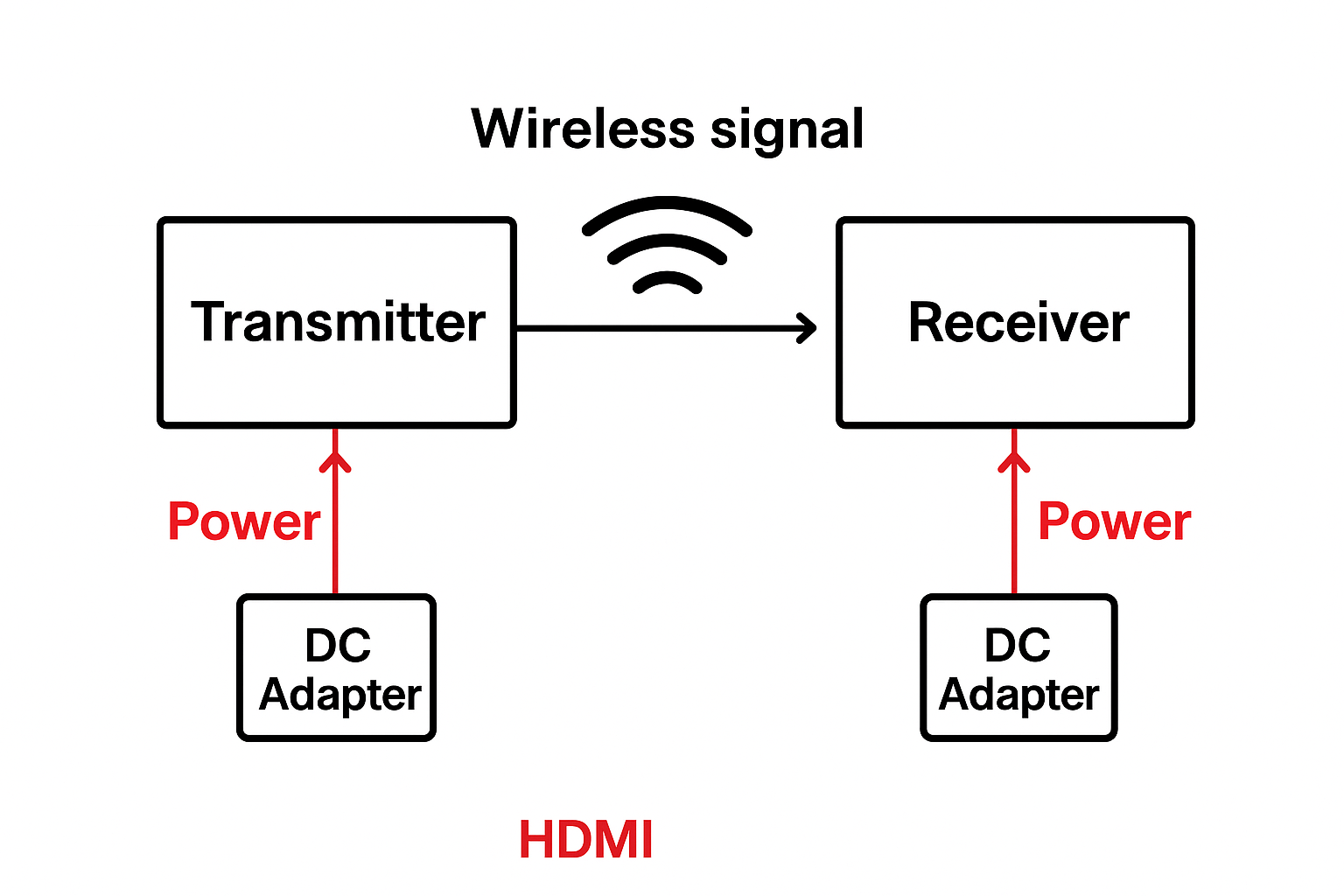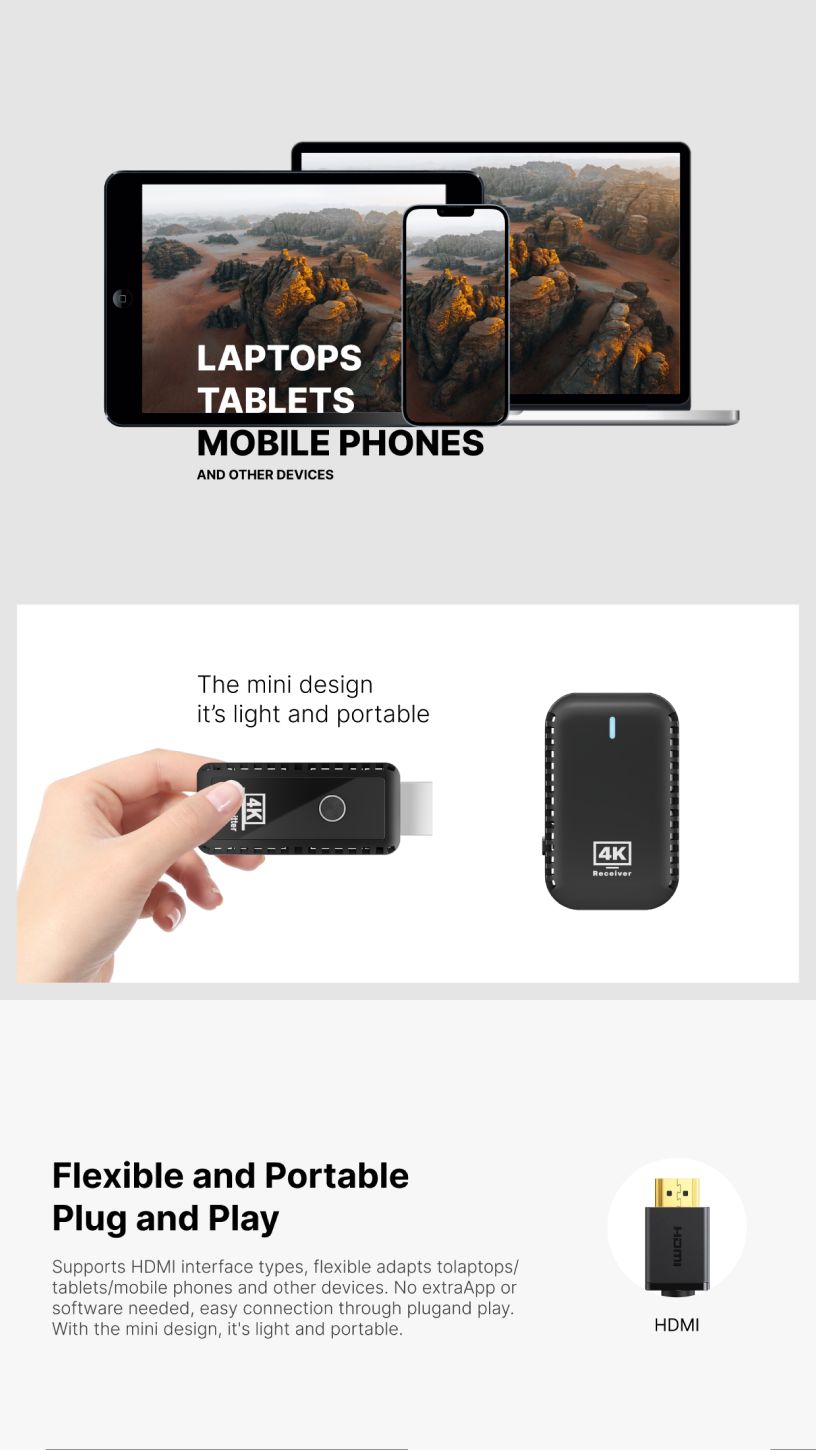Why Wireless HDMI Extenders Require Power: A Technical Insight for Distributors
Keywords: wireless HDMI extender, wireless HDMI transmitter and receiver, wireless HDMI extender 4K, wireless HDMI transmitter and receiver 4K, wireless HDMI transmitter and receiver reviews 2025
Introduction
In modern AV (Audio-Video) transmission systems, wireless HDMI extenders have become essential tools for achieving high-quality, cable-free connectivity between source devices and display screens. For distributors and system integrators, understanding how these devices work—and why they require power—is critical to advising customers and ensuring reliable installations.
This article explains the technical reasons why wireless HDMI transmitter and receiver systems need external power, based on years of product experience in the professional AV industry.
1. How a Wireless HDMI Extender Works
A wireless HDMI extender consists of two main components:
- Transmitter (TX) – captures HDMI video/audio from the source device (such as a PC, laptop, or media player), encodes it, and transmits it wirelessly.
- Receiver (RX) – receives the wireless signal, decodes it, and outputs it to a display (such as an HDTV, projector, or monitor).
Unlike a standard HDMI cable, which is a passive connection, both the transmitter and receiver in a wireless HDMI system are active devices containing processors, encoders, and wireless modules. These components require stable and continuous power to operate.
2. Why Power Is Necessary
A. Signal Processing Requires Energy
To transmit high-definition video wirelessly, the extender must:
- Encode and compress HDMI signals in real time.
- Modulate them onto a 5GHz or 60GHz radio frequency.
- Manage synchronization and error correction to maintain low latency.
These processes rely on active chipsets and amplifiers, which draw more power than HDMI ports can supply.
B. HDMI Ports Provide Insufficient Power
The HDMI interface itself only delivers +5V / 50mA, which is designed for signal detection—not to power processors or wireless modules.
Wireless HDMI extenders typically require 5V/1A or 5V/2A through an external DC adapter or USB power input.
C. Wireless Modules Consume More Power
To achieve stable, interference-free transmission over 30–150 meters, high-performance Wi-Fi or 60GHz chips are used. Maintaining strong and low-latency connections consumes significantly more energy than a passive HDMI cable.
3. Power Supply Options
Most wireless HDMI extenders come with:
- DC adapters for both transmitter and receiver units.
- Some models allow USB-powered operation (especially compact 1080p versions).
In both cases, power ensures:
- Stable wireless performance
- Reduced latency
- Reliable image quality
4. Example: Power Flow in a Wireless HDMI Setup
[Source Device] → [HDMI] → [Transmitter] ⇢ (Wireless Signal) ⇢ [Receiver] → [HDMI] → [Display] ↑ Power via DC/USB ↑ Power via DC/USB

Each unit must receive power individually to ensure the transmission, decoding, and output functions operate continuously.
5. Choosing the Right Wireless HDMI Extender for Your Business
When selecting a wireless HDMI transmitter and receiver 4K for your clients, consider:
- Transmission Range: Choose based on your application (home entertainment vs. conference room vs. digital signage).
- Resolution Support: 1080p for standard use; wireless HDMI extender 4K for professional applications.
- Power Supply Method: Check whether USB or DC adapters are included.
- User Feedback: Review wireless HDMI transmitter and receiver reviews 2025 to assess product reliability and latency.
Conclusion: Reliable Power for Reliable Performance
In summary, wireless HDMI extenders need power because they actively process, encode, and transmit video signals through wireless frequencies. Without external power, the system cannot ensure stable, high-quality performance—especially for 4K or long-range applications.
If you’re a distributor or system integrator looking for trusted wireless HDMI transmitter and receiver solutions, our expert team at Hoomc provides reliable OEM/ODM options with 4K support, low latency, and global certifications.



